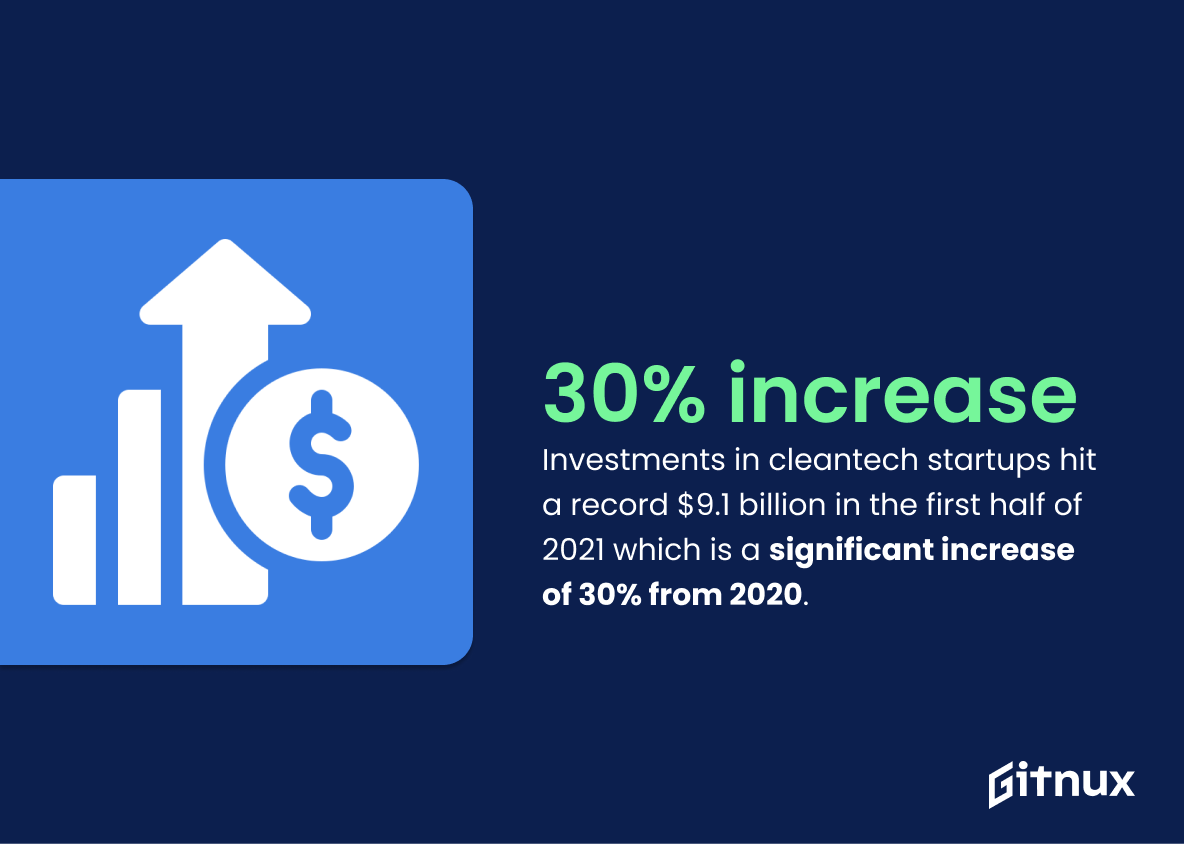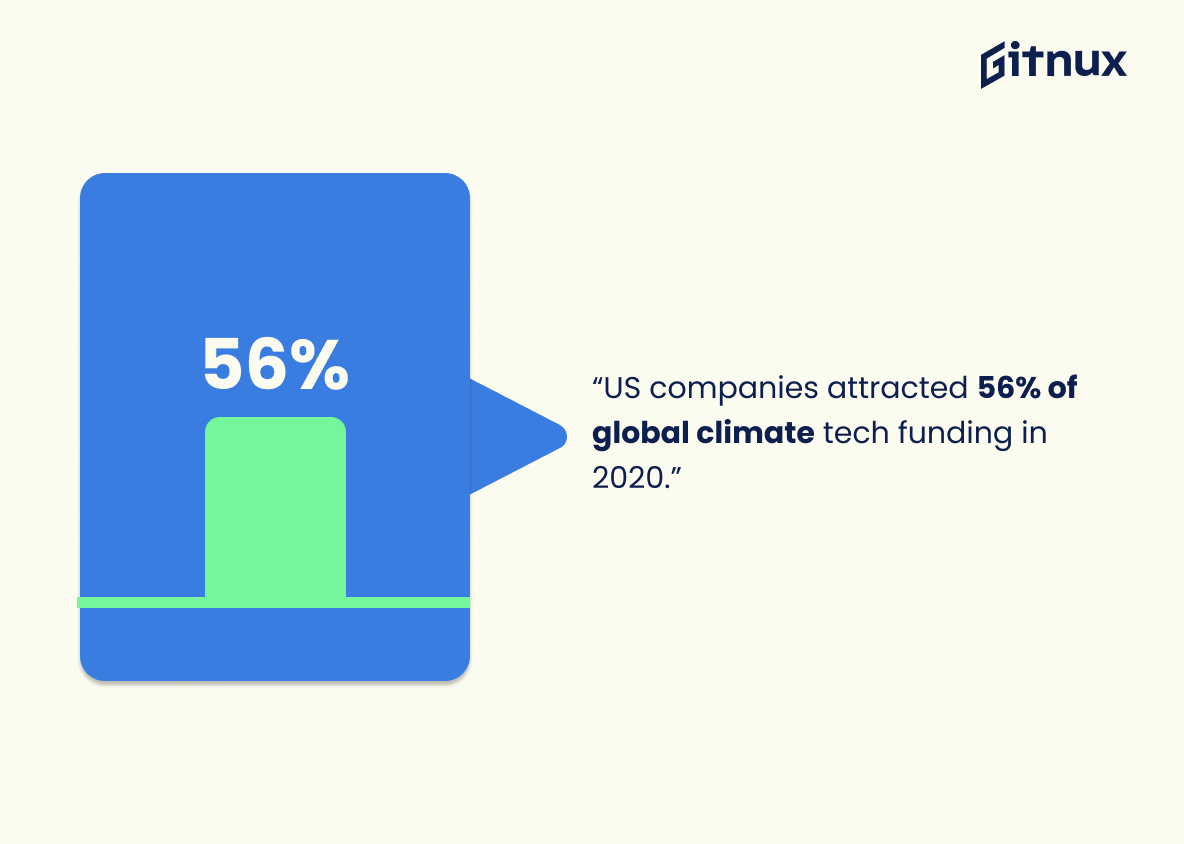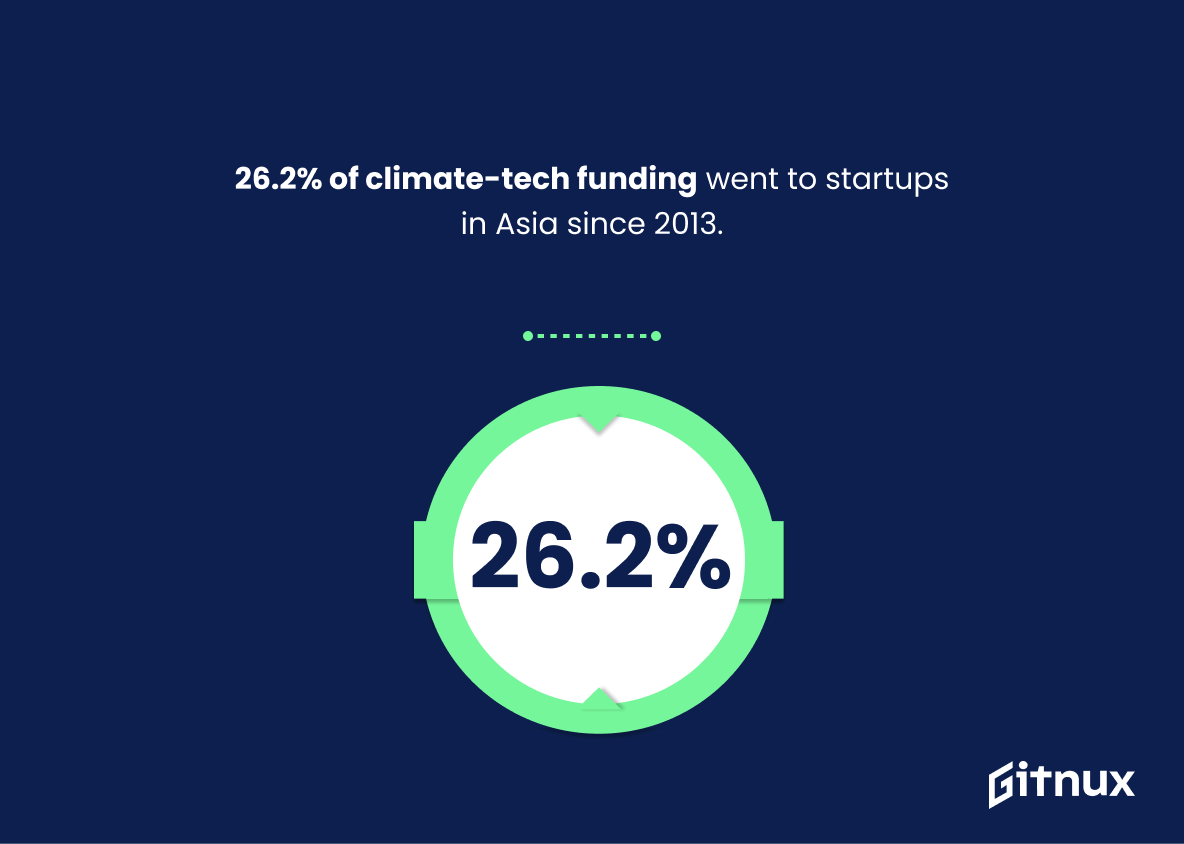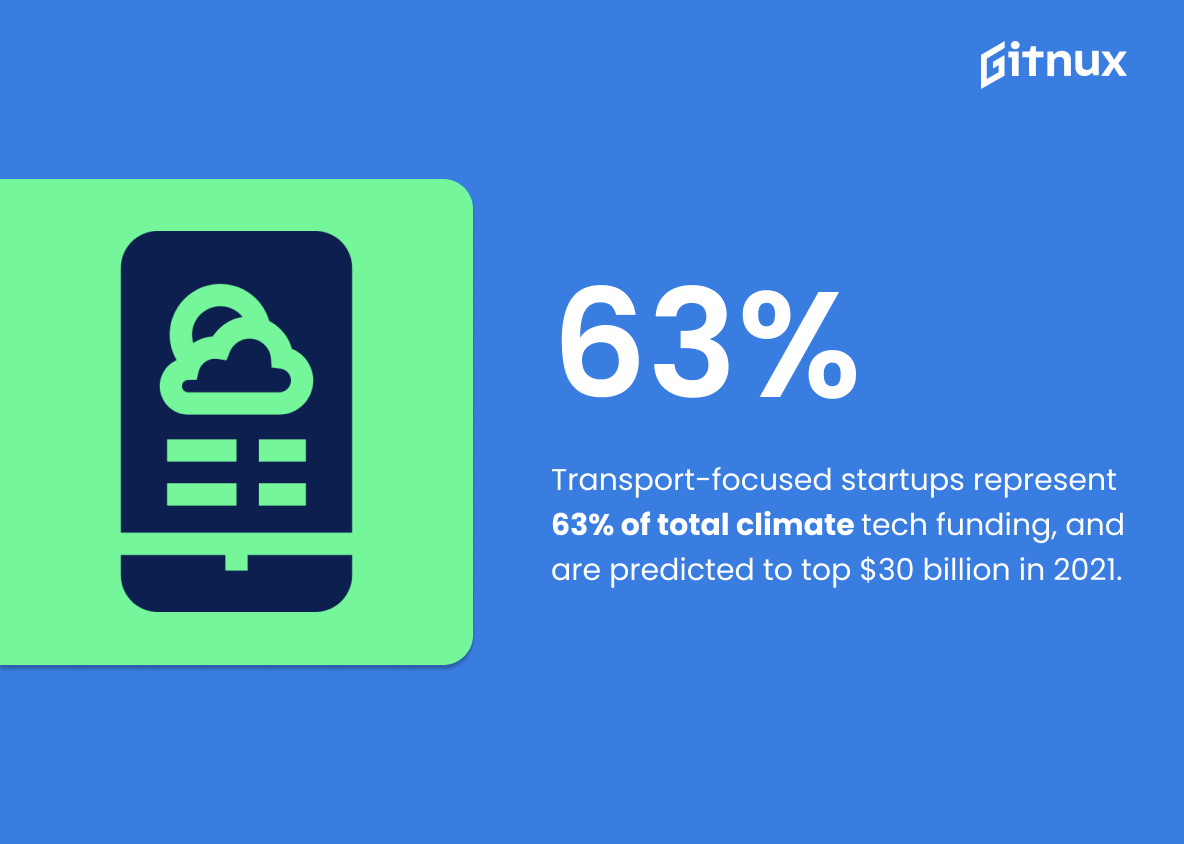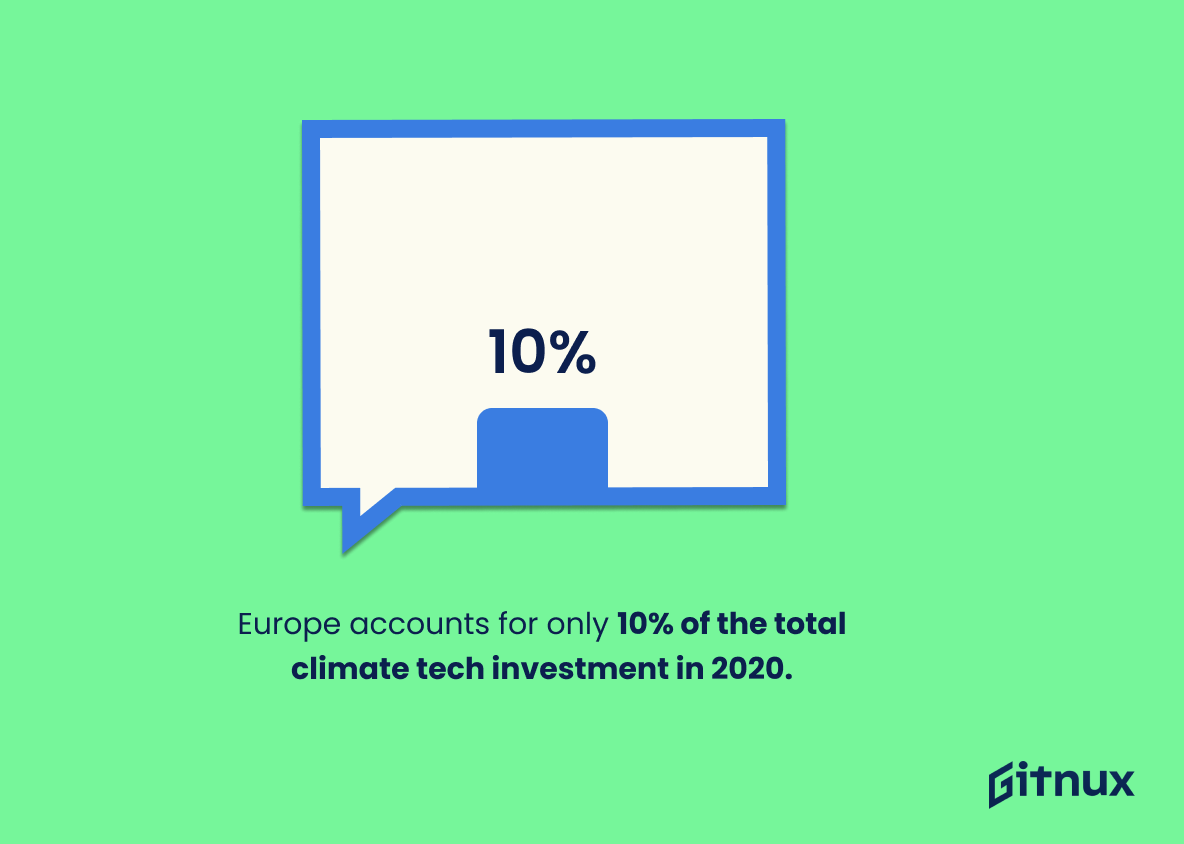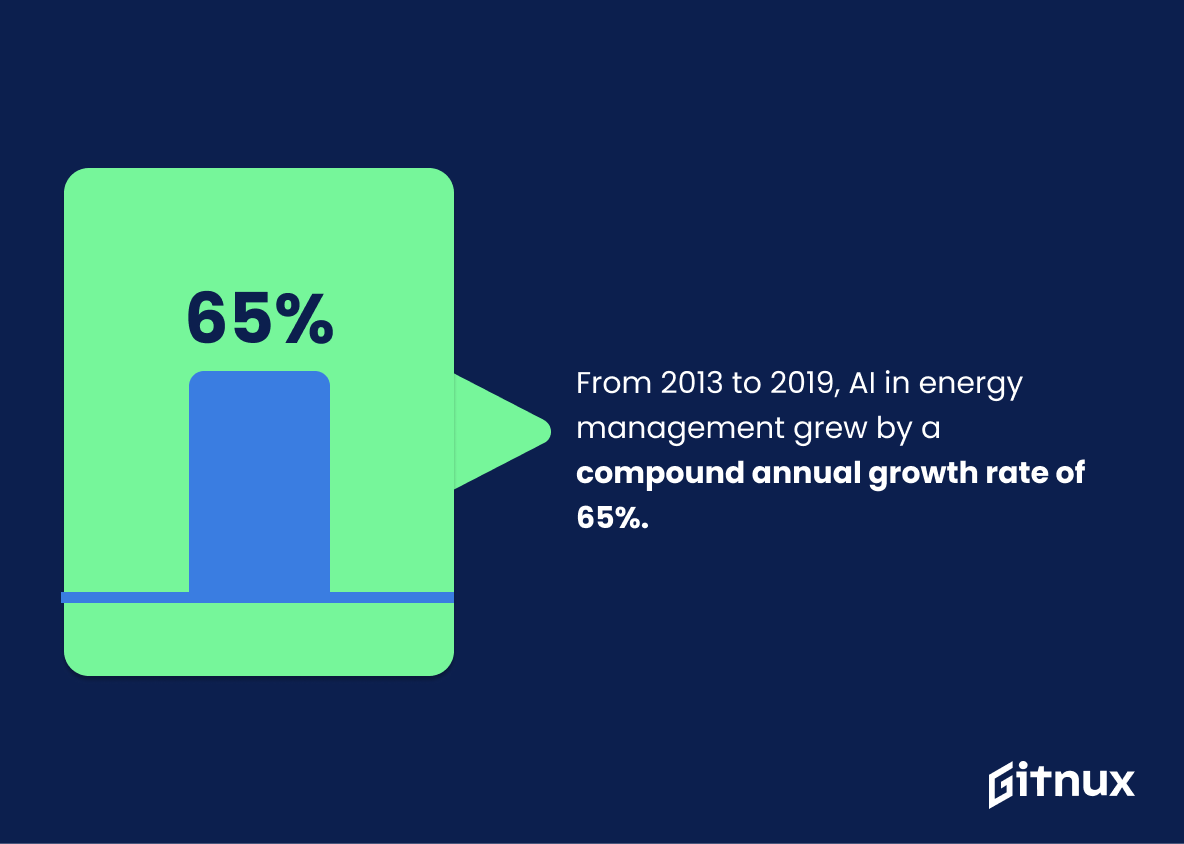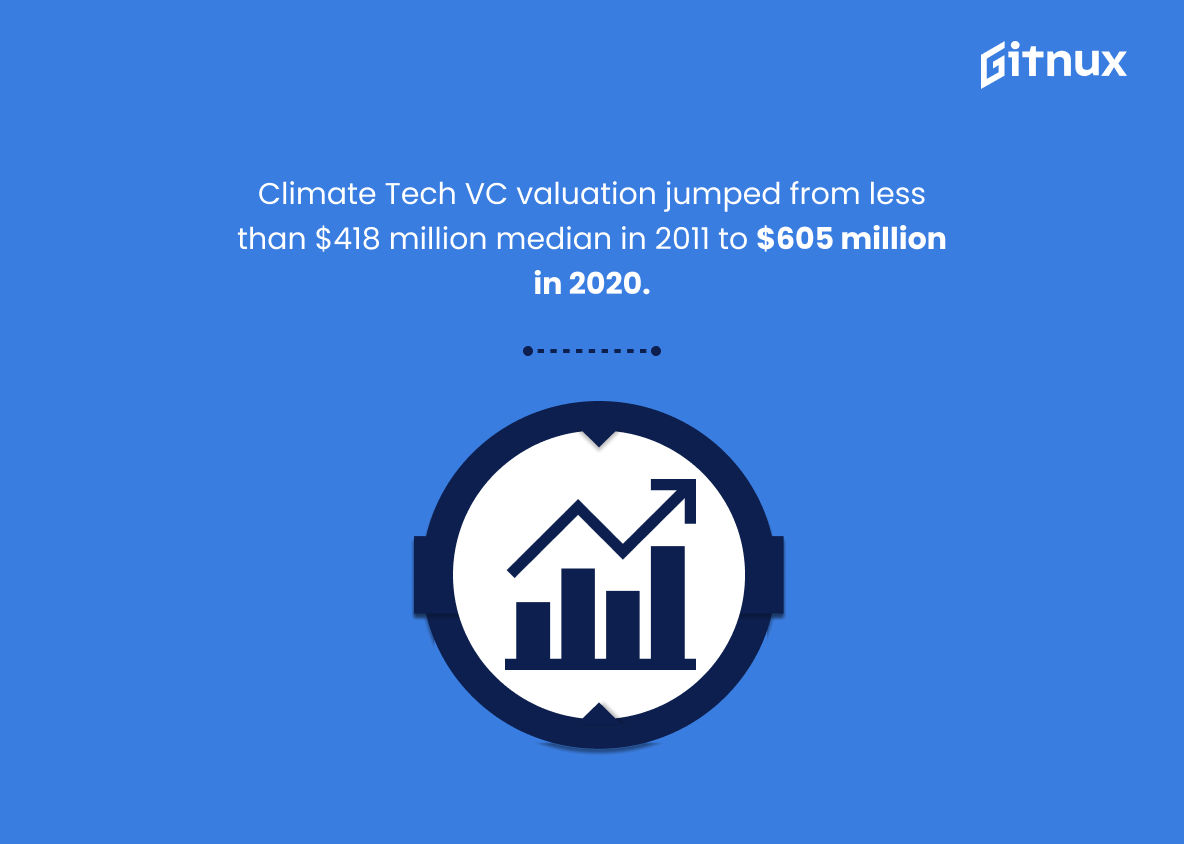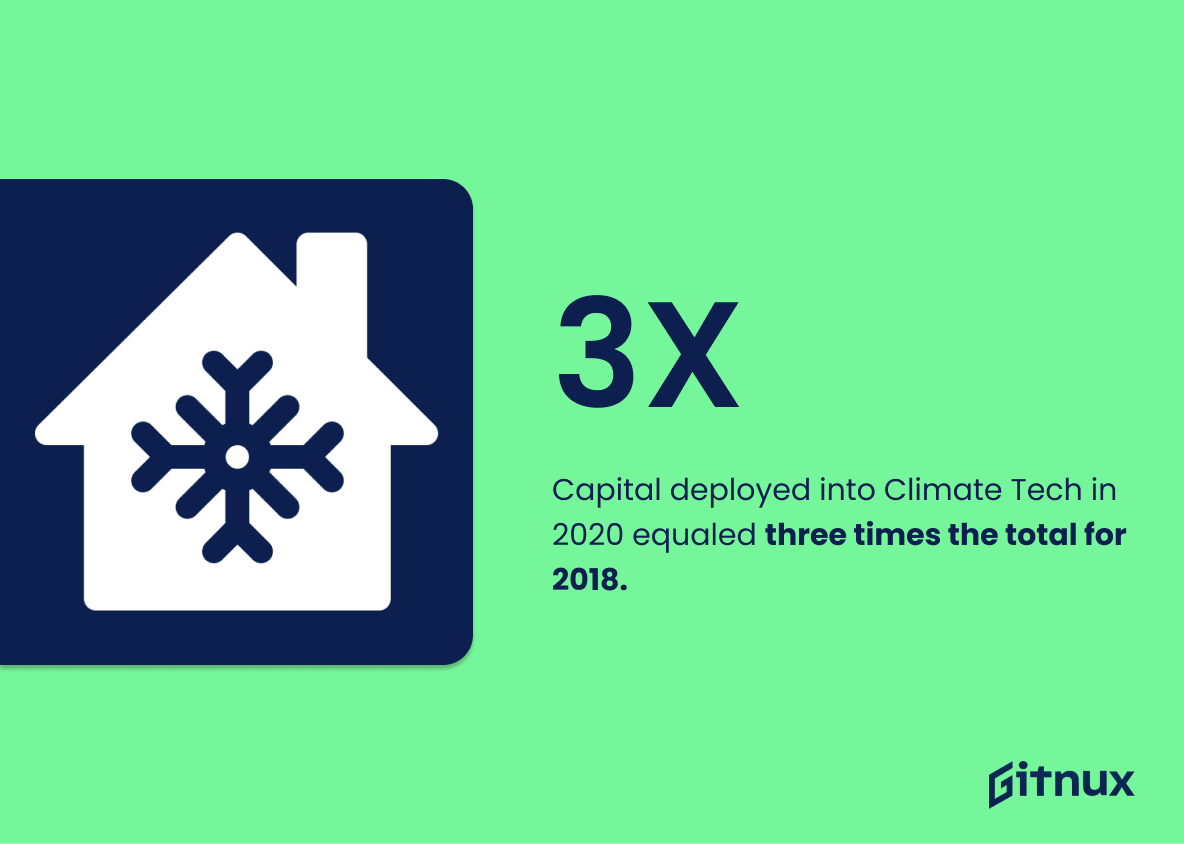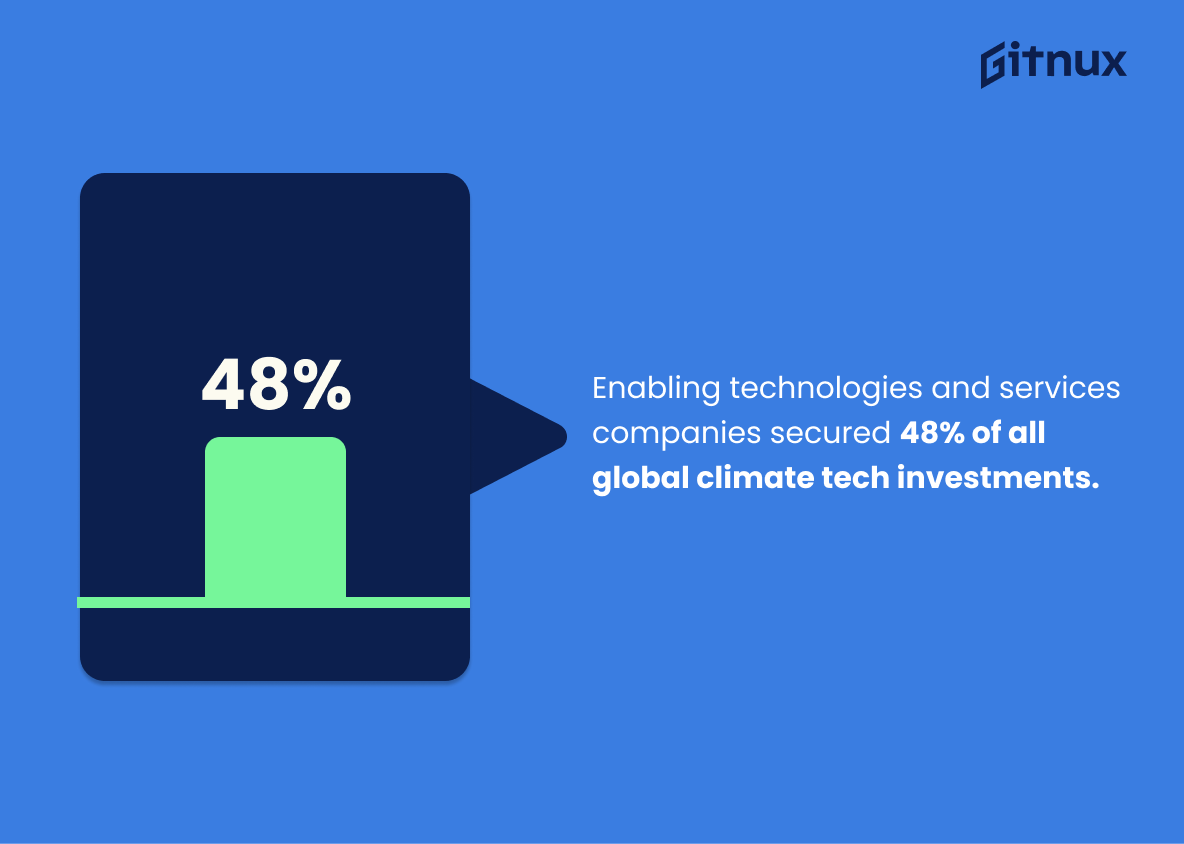Welcome to a fascinating journey into the heart of the Climate Tech industry. Surging with innovative solutions and groundbreaking technologies, this industry is the forefront of the global environmental revolution. This blog post delves deep into the world of Climate Tech, delving into the most recent statistics and developments that are shaping our sustainable future. We’ll dissect the role of this dynamic sector, unfold emerging trends, and reveal surprising figures that reflect the ongoing transformation of our global economy towards sustainability and resilience. Whether you are from the tech sector, an environmentally conscious individual, or simply curious, this comprehensive review of Climate Tech Industry Statistics will enrich your understanding and perhaps even inspire your next environmentally-friendly initiative. Stay tuned as we delve into the dynamic world of Climate Tech.
The Latest Climate Tech Industry Statistics Unveiled
“Investments in cleantech startups hit a record $9.1 billion in the first half of 2021 which is a significant increase of 30% from 2020.”
Highlighting the impressive surge in investments to the tune of $9.1 billion in cleantech startups during the first two halves of 2021, a hefty 30% leap from 2020, punctuates the burgeoning awareness and recognition by the investment community of the critical place cleantech startups hold in tackling climate change. Through such colossal investment strides, the statistics illuminates a radical shift in financial markets that are progressively acknowledging the role of innovative cleantech solutions in the battle against climate change. The data capture a telling snapshot of finance and business making a pivotal cognitive leap, embracing the transition towards a sustainable future, and positioning cleantech startups as a central player in the climate tech industry.
“Energy transition technologies need investment of $3.5 trillion annually over the next decade.”
Invoking a figure of $3.5 trillion annual investment for the next 10 years in energy transition technologies, this puts a monetary lens on the scale and urgency of climate change mitigation efforts. In the nuanced landscape of Climate Tech Industry Statistics, this astronomical number underscores the financial commitment necessary to nudge forward sustainable technologies. It accentuates the towering financial obstacle before us, while simultaneously suggesting the economic opportunities waiting to be unlocked by driving climate-related technological innovation. It is not mere trivia, but a pivotal marker—guiding investors, policymakers, and innovators to appreciate and act on the immense funding requirements for a greener future.
“The global value of Climate Tech market will reach $87 billion by 2027.”
Forecasting an impressive $87 billion valuation for the Climate Tech market by 2027 paints an enlightening portrait of the industry’s potential growth. This extraordinary surge can be attributed to increasing global awareness and adoption of Climate Tech solutions both by individuals and businesses. From the perspective of investors, policy makers, and innovators, this projected value reveals untapped prospects of growth and massive investment opportunities. Consequently, it illuminates the unmistakable demand for technologies focusing on climate change mitigation and adaptation. As such, this data stands as a testament to the pervasive impact of the Climate Tech industry within the global economic landscape over the next few years.
“US companies attracted 56% of global climate tech funding in 2020.”
The vital thread weaving into the narrative of the 2020 global climate tech industry tapestry is the imposing figure of 56%, the share of funding attracted by US companies. This weighty number spins a tale of America’s dominance, serving as the industry’s polestar. Picture not only a beacon leading innovators, investors, and policy creators, but a magnet pulling in over half of global funding. The magnitude of this detail raises from the shadows the plot of US influence and potential in the ongoing journey of climate tech development. It hints at the nation’s power to pioneer and transform, while also hinting at where the balance of climate tech innovation could possibly sit. It twines into questions of where future funding may stream and the profound role American companies will likely play in steering the climate tech industry’s trajectory.
“26.2% of climate-tech funding went to startups in Asia since 2013.”
In the grand symphony of the Climate Tech Industry statistics, the note that rings clear and sharp is ‘26.2% of climate-tech funding went to startups in Asia since 2013.’ This is far from a mere stray statistic lost in the cluster of data points. It’s a potent highlight, emphasizing Asia’s rising prominence in the climate-tech landscape—an unmistakable pulse in the global heartbeat of climate-tech innovation and investment. It serves as a beacon, guiding post indicating the meteoric rise of Asia as a hub for startups in this dynamic industry. Simultaneously, this stat also presents a challenge, subtly igniting conversations about funding distribution, regional development, and potential growth opportunities in regions underrepresented in this burgeoning economic sector.
“Transport-focused startups represent 63% of total climate tech funding, and are predicted to top $30 billion in 2021.”
Undoubtedly, the given statistic offers a potent insight into the world of Climate Tech Industry. It illuminates the powerful role transport-focused startups play in combating climate change, unveiling their dominant 63% stake in total climate tech funding. This statistic shadows a telling truth – change is roaring down the highway, fueled by passionate innovation and robust financial backing.
Peering into this crystal ball of data, we see funding poised to rev up to a mighty $30 billion in 2021, underlining the significance of transport-based solutions in our urgent quest to slow global warming. This statistic not just displays the current scenario but also shifts the spotlight towards the momentum and future trajectory of the climate tech industry, setting the tachometer of anticipation among investors, entrepreneurs, and change-makers hoping to drive a greener future.
Thus, this fact plays a dual role, serving as a milestone of today’s progress and a signpost for tomorrow’s growth in the Climate Tech Industry. It adds substance to discussions about where we should be channeling our energies and resources. In essence, it delivers a clear message: If you are aiming for impactful climate tech investment, revving up the engine of transport-focused endeavours might just be the fast lane to effective mitigation strategies.
“Europe accounts for only 10% of the total climate tech investment in 2020.”
Delving into the realm of Climate Tech Industry Statistics, the revelation that Europe’s contribution to total climate tech investment in 2020 is a mere 10% paints an intriguing picture of the global eco-innovation landscape. It serves to highlight Europe’s relatively reserved stance in the race towards fostering sustainable technologies, hinting at unexplored potential or potential barriers in the region for green innovation. This minuscule percentage not only sparks discussions around the geographical disparities at play, but also sheds light on regions that are likely spearheading this critical sphere. Thus, it is an essential reference point for strategists, investors, and policy-makers alike, poised to shape future narratives in the climate tech industry.
“Battery storage, smart grid, and energy efficiency startups have attracted $11.4 billion of investment across 1,285 deals since 2013.”
Delving into the terrain of climate tech industry, it’s enlightening to unveil the statistic that startups focusing on battery storage, smart grid, and energy efficiency have magnetized a whopping $11.4 billion in investments across 1,285 deals since 2013. This fiscal statistic serves as a testament to the escalating attention and tangible backing being devoted to innovate solutions to climate change, providing optimism for the future of sustainable technology. Additionally, it emphasizes the emerging trend of financial muscle being flexed towards sustainable initiatives, with investors keen on fostering advancements that hold the promise of economic profitability along with positive environmental impact. In this sense, the statistic works as a barometer gauging the meteoric ascent and potential of the Climate Tech sector.
“From 2013 to 2019, AI in energy management grew by a compound annual growth rate of 65%.”
The striking statistic, “From 2013 to 2019, AI in energy management grew by a compound annual growth rate of 65%,” acts as a trailblazing beacon as we traverse through the labyrinth of Climate Tech Industry Statistics. It uncovers a spectacular growth trajectory, signifying how AI’s dynamism has radical implications for energy management – a cornerstone in the battle against climate change. The exponential growth conveys the heightened significance placed on AI as a critical weapon in our climate technology toolbox, enhancing efficiency and transforming practices. This statistic harmoniously blends the narrative of techno-scientific advancement with the urgent need for environmental sustainability, ultimately echoing the transformative potential of Climate Tech Industry.
“Climate Tech VC valuation jumped from less than $418 million median in 2011 to $605 million in 2020.”
Illuminating the incredible growth trajectory of the Climate Tech VC industry, the median valuation catapulted from a humble $418 million in 2011 to a significant $605 million come 2020. A testament to the scaling demand and value in climate-centric technological solutions, this statistic also solidifies the potential of this sector as a worthy investment avenue. More than just impressive numbers, this surge underscores the increasing global consciousness towards mitigating the climate crisis by harnessing the power of technology. Therefore, in the lexicon of Climate Tech Industry statistics, this financial evolution narrates a story of escalating market value, booming investor trust, and incarnates the hopeful bridge between technological innovation and climate change solutions.
“Capital deployed into Climate Tech in 2020 equaled three times the total for 2018.”
The colossal tripling of capital deployed into Climate Tech in 2020 compared to 2018 carries significant ramifications for the industry. Not only does it signify an escalating trend in investments due to increasing recognition of the sector’s economic potential, it also reflects changing attitudes and growing commitment towards environmental concerns, fueled by the urgency of battling climate change. How our economy and society responds to these challenges is being shaped right now and this statistic serves as a vivid testament. It underscores the momentum and vast opportunities within the Climate Tech arena, painting a picture of an industry on the rise amid global efforts for ecological restoration and sustainability.
“75% of Climate Tech funding since 2013 has gone towards U.S. and Canadian startups.”
In the grand constellation of Climate Tech, the shining star appears to be the vibrant canvas of U.S and Canadian startups, captivating a whopping 75% of all the funding from 2013. This magnetic attraction of capital signifies not only the commitment and innovation in the North American startup ecosystem, but also the concentrated investment focus on this sector. This profile of funding landscape also implies a socially relevant trend of investors, putting their faith and funds in the noble vision of combating climate change. Therefore, anyone observing this industry’s pulse should bear in mind this phenomenal tilt toward North American innovation, as it shapes the global climate tech narrative and sets the stage for future developments.
“Investments in decarbonization technologies jumped more than sevenfold, to $5 billion in 2020.”
This barometer of financial commitment showcased by the massive sevenfold leap, rising to a staggering $5 billion in investments within the decarbonization technologies sector in 2020, unveils a tectonic shift in industry focus. It asserts the increasing importance of sustainable practices within the Climate Tech Industry. Echoing the urgency of climate change mitigation, it underscores the surging confidence in green technologies as not just critical interventions for environmental sustenance but also lucrative areas of growth. This trend also suggests how significantly corporates and investors are aligning their strategies with the worldwide push for cleaner, green alternatives. Therefore, this figure amplifies the rapid and robust rise of decarbonization technologies and subsequently, the emergence of a cleaner world.
“Enabling technologies and services companies secured 48% of all global climate tech investments.”
Undoubtedly, the power of the statistic – “Enabling technologies and services companies secured 48% of all global climate tech investments” – should not be underemphasized. In the realm of Climate Tech Industry statistics, this illuminates a significant trend. It conveys how central these types of companies have become in the efforts towards fighting climate change and creating a more sustainable future. More than just a number, it essentially marks the steady rise of a new titan – the enabling technologies and services companies. Their securing of 48% of all global climate tech investments showcases their growth potential and influence in climate technology, pointing towards a future where they become key players. Providing powerful insights that invoke understanding and paint a clear picture about the state of the industry, such statistics anchor the entire narrative for the blog post about Climate Tech Industry.
“China leads in the commercialization of clean energy technologies, with over 75% of the world’s solar panels manufactured in China.”
Diving headfirst into the realm of Climate Tech Industry Statistics, one truth stands out starkly – China’s commanding stature in the commercialization of clean energy technologies, owing to its manufacturing prowess that accounts for over 75% of the world’s solar panels. The radiance of this assertion extends far beyond mere numbers; it illuminates China’s commitment to forging a sustainable future. Not only does this put a spotlight on China’s influential role within the global clean energy sector, but it also underscores the gigantic strides they have taken to defeat the shadow of environmental degradation. This narrative, woven in data, challenges other technological giants to gear up their green advancement and contributes significantly to the discourse on global climate crisis solutions.
“The clean tech sector runs a $7.1 billion surplus, including a surplus of $6.4 billion with China.”
The remarkable surplus of $7.1 billion that the clean tech sector boasts, inclusive of a $6.4 billion surplus with China, energizes the narrative of the climate tech industry’s tremendous financial performance. This intriguing tidbit brims with implications of the sector’s significant contributions towards economic growth and global trade dynamics. Not to mention, it underscores the potential the sector has to morph into a profound influencer in stabilizing climate change as its financial robustness paves the way for investment in innovative climate-friendly technologies. This surplus is a testament to the sector’s ability to couple fiscal prosperity with an environmentally-aware business agenda, redefining the way we view ‘profitability’ in the realm of modern industries.
“Accelerator programs for Climate Tech growth have jumped from 10 in 2008 to 579 in 2020.”
Witnessing a surge in accelerator programs for Climate Tech growth from a modest 10 in 2008 to a staggering 579 in 2020 paints a striking picture of the momentous shifting tides in the global landscape. This monumental leap is not merely about numbers, but it eloquently echoes the increasing importance and recognition of Climate Tech as a potent tool against climate change. This is a clarion call to innovators, investors, and governments alike, signalling the magnified opportunities and burgeoning interest in this crucial sector. Furthermore, this amplification reveals that there is a rapidly growing ecosystem of support for Climate Tech startups, reflecting an increasing confidence in the industry’s ability to provide viable and sustainable solutions to our most pressing environmental challenges. It’s also indicative of the fact that Climate Tech is no longer a niche space but one of the key sectors in today’s economy steering the wheel towards a sustainable future, a vital sign to consider in any discussion of Climate Tech Industry Statistics.
“Renewable energy represented the single largest increase in global RD&D spending, rising 16% to $6.6 billion.”
Delving into the intricacies of this significant statistic, we unearth the evolving equation between renewable energy and global Research, Development, and Deployment (RD&D). With a substantial ascent of 16%, the expenditure escalated to a staggering $6.6 billion, signaling a momentous shift in the Climate Tech Industry.
The importance of this transformative leap can be appreciated from various aspects. From an economical standpoint, it showcases the heightened emphasis placed on sustainability and the consistent investment growth towards securing a greener future. It sets the stage for rapid advancements in solar power, wind energy, and other forms of renewable energy.
On the climatic front, it is a clear testament to the global consciousness surrounding climate change, opening a new chapter in our fight against this looming crisis. It emphasizes the urgency with which countries around the world are redirecting their resources to mitigate carbon footprints and equip the world with better, cleaner energy sources.
In essence, the statistic cleverly weaves a tale of progress, responsibility, and the relentless quest for sustainability, establishing the renewable energy sector as a pivotal player in the climate tech industry. It tells us that the world is ready to invest, innovate, and transition to a more sustainable future, setting the scene for a vibrant dialogue on renewable sources and their role in today’s energy landscape.
“Climate Tech deals in Africa increased from less than 10 in 2016 to almost 60 in 2020.”
A captivating surge in Climate Tech deals from less than 10 in 2016 to almost 60 in 2020 forms the heartbeat of Africa’s emerging impact on the global environmental stage. This data point echoes the continent’s ongoing transformation from an ancillary player to a major contender in the Climate Tech industry. With a six-fold rise over a brief four-year span, Africa’s Climate Tech investment scene is not just waking up, it’s sprinting, showcasing the immense potential embedded in the continent’s efforts towards combating climate change. This resonating figure embellishes the narrative, underlining Africa’s evolving commitment to invest and support Climate Tech, hence shaping the future of sustainable global growth.
“The clean energy sector in the US alone is estimated to be around 3.3 million jobs.”
Undeniably, the assertion that the US clean energy sector sustains approximately 3.3 million jobs acts as a tangible luminary in outlining the potent economic influence of the Climate Tech Industry. Weaving through the narrative of the blog post, this pivotal fact intimately intertwines job creation with the burgeoning Climate Tech Industry, illuminating not just the vastness of the sector, but also its instrumental role as an employer in the American economy.
In an era characterised by the need for sustainable jobs and technologies, this statistic beckons readers, policymakers and investors alike to acknowledge the immense potential of the Climate Tech Industry as a powerhouse of economic activity. Moreover, it also subtly reinforces the narrative that the pursuit of green, sustainable technologies does not need to be an economic compromise, rather it can be a driving factor of job prosperity and economic growth.
Conclusion
In sum, the climate tech industry is no longer an emerging niche, but a deep-rooted necessity in our race against time to halt climate change. Bolstered by impressive statistics in investment, technology advancement, and rapid growth, the trajectory of this industry is on an unwavering incline. However, the data we introspected in this blog post also suggests there are opportunities that are yet to be fully exploited. For those willing to face the challenge, the move towards a sustainable future offers immense potential, both in terms of public good and economic returns. Understanding and acting upon these climate tech industry statistics isn’t just an insightful strategy – it is our collective responsibility towards environmental stewardship for a greener, healthier, and more sustainable world.
References
0. – https://www.solartribune.com
1. – https://www.www.wired.co.uk
2. – https://www.www.forbes.com
3. – https://www.www.cbinsights.com
4. – https://www.www.pwc.com
5. – https://www.time.com
6. – https://www.www.wri.org
7. – https://www.techcrunch.com
8. – https://www.www.weforum.org
9. – https://www.e2.org
10. – https://www.www.greentechmedia.com
11. – https://www.www.energy.gov
12. – https://www.www.iea.org
13. – https://www.www.spglobal.com
